
Furniture refers to movable objects intended to support various human activities such as seating, eating (tables), storing items, eating and/or working with an item, and sleeping. Furniture is also used to hold objects at a convenient height for work, or to store things. Furniture can be a product of design and can be considered a form of decorative art. In addition to furniture's functional role, it can serve a symbolic or religious purpose. It can be made from a vast multitude of materials, including metal, plastic, and wood. Furniture can be made using a variety of woodworking joints which often reflects the local culture.
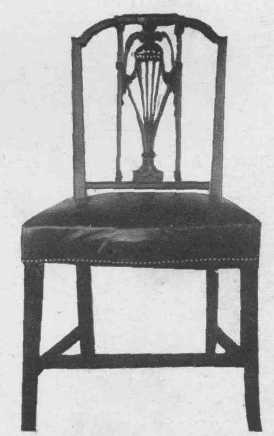
Thomas Sheraton was a furniture designer, one of the "big three" English furniture makers of the 18th century, along with Thomas Chippendale and George Hepplewhite. Sheraton gave his name to a style of furniture characterized by a feminine refinement of late Georgian styles and became the most powerful source of inspiration behind the furniture of the late 18th century.
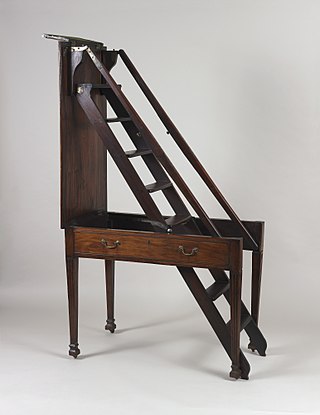
Metamorphic library steps are a type of archaic dual-use furniture, consisting of a small folding staircase that can be transformed into chair or desk form. In desk form, it can also be considered a mechanical desk.

American Empire is a French-inspired Neoclassical style of American furniture and decoration that takes its name and originates from the Empire style introduced during the First French Empire period under Napoleon's rule. It gained its greatest popularity in the U.S. after 1820 and is considered the second, more robust phase of the Neoclassical style, which earlier had been expressed in the Adam style in Britain and Louis Seize, or Louis XVI, in France. As an early-19th-century design movement in the United States, it encompassed architecture, furniture and other decorative arts, as well as the visual arts.
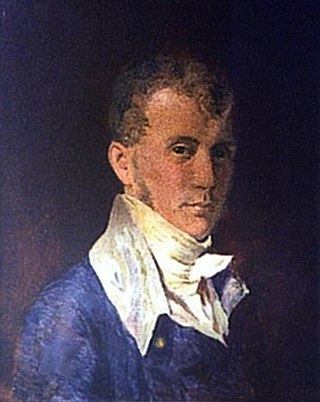
Duncan Phyfe was one of nineteenth-century America's leading cabinetmakers.
Chairs are known from Ancient Egypt and have been widespread in the Western world from the Greeks and Romans onwards. They were in common use in China from the twelfth century, and were used by the Aztecs. In Sub-Saharan Africa, chairs were not in use before introduction by Europeans.

A table is an item of furniture with a raised flat top and is supported most commonly by 1 or 4 legs, used as a surface for working at, eating from or on which to place things. Some common types of table are the dining room table, which is used for seated persons to eat meals; the coffee table, which is a low table used in living rooms to display items or serve refreshments; and the bedside table, which is commonly used to place an alarm clock and a lamp. There are also a range of specialized types of tables, such as drafting tables, used for doing architectural drawings, and sewing tables.

Sheraton is a late 18th-century Neoclassical English furniture style, in vogue c. 1785–1820, that was coined by 19th-century collectors and dealers to credit furniture designer Thomas Sheraton, whose books, The Cabinet Dictionary (1803) of engraved designs and the Cabinet Maker's & Upholsterer's Drawing Book (1791) of furniture patterns exemplify this style.

The Green Room is one of three state parlors on the first floor of the White House, the home of the president of the United States. It is used for small receptions and teas. During a state dinner, guests are served cocktails in the three state parlors before the president, first lady, and a visiting head of state descend the Grand Staircase for dinner. The room is traditionally decorated in shades of green. The room is approximately 28 by 22.5 feet. It has six doors, which open into the Cross Hall, East Room, South Portico, and Blue Room.

A club foot is a type of rounded foot for a piece of furniture, such as the end of a chair leg. It is also known by the alternative names pad foot and Dutch foot, the latter sometimes corrupted into duck foot.

Charles-Honoré Lannuier, French cabinetmaker (1779–1819), lived and worked in New York City. In Lannuier's time, the style of his furniture was described as "French Antique." Today his work is classified primarily as Federal furniture, Neoclassical, or American Empire.

The Washington Governor's Mansion is the official residence of the governor of Washington. The Georgian-style mansion is located on the grounds of the State Capitol campus in the capital city Olympia. It is on the crest of Capitol Point, with a view of mountains, Capitol Lake and the city.
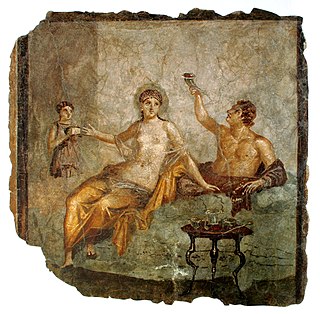
A cabriole leg is one of (usually) four vertical supports of a piece of furniture shaped in two curves; the upper arc is convex, while lower is concave; the upper curve always bows outward, while the lower curve bows inward; with the axes of the two curves in the same plane. This design was used by the ancient Chinese and Greeks, but emerged in Europe in the very early 18th century, when it was incorporated into the more curvilinear styles produced in France, England and Holland.

A splat is the vertical central element of a chair back. Typically this element of a chair is of exposed wood design. The splat is an important element of furniture identification, since its design has a multitude of variations incorporating the themes of different furniture periods. Chippendale's furniture was designed using varied splat details to include Gothic, Chinese, English and some with French details.

Luke Vincent Lockwood was born February 1, 1872, in Brooklyn, New York, the son of Luke A. Lockwood and his wife, Mary Louise Lyon, daughter of Captain William Lyon and Catherine Mead.
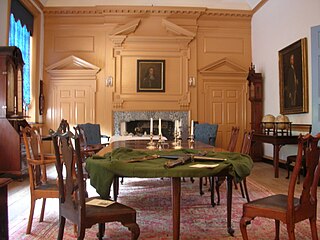
The Queen Anne style of furniture design developed before, during, and after the time of Queen Anne, who reigned from 1702 to 1714.

Millford Plantation is a historic farmstead and plantation house located on SC 261 west of Pinewood, South Carolina. It was sometimes called Manning's Folly, because of its remote location in the High Hills of Santee section of the state and its elaborate details. Designated as a National Historic Landmark, it is regarded as one of the finest examples of Greek Revival residential architecture in the United States. The house has been restored and preserved along with many of its original Duncan Phyfe furnishings.
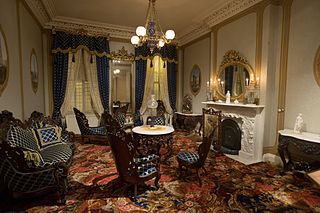
The Rococo Revival style emerged in Second Empire France and then was adapted in England. Revival of the rococo style was seen all throughout Europe during the 19th century within a variety of artistic modes and expression including decorative objects of art, paintings, art prints, furniture, and interior design. In much of Europe and particularly in France, the original rococo was regarded as a national style, and to many, its reemergence recalled national tradition. Rococo revival epitomized grandeur and luxury in European style and was another expression of 19th century romanticism and the growing interest and fascination with natural landscape.

What later came to be known as the William and Mary style is a furniture design common from 1700 to 1725 in the Netherlands, Kingdom of England, Kingdom of Scotland and Kingdom of Ireland, and later in England's American colonies. It was a transitional style between Mannerist furniture and Queen Anne furniture. Sturdy, emphasizing both straight lines and curves, and featuring elaborate carving and woodturning, the style was one of the first to imitate Asian design elements such as japanning.





















